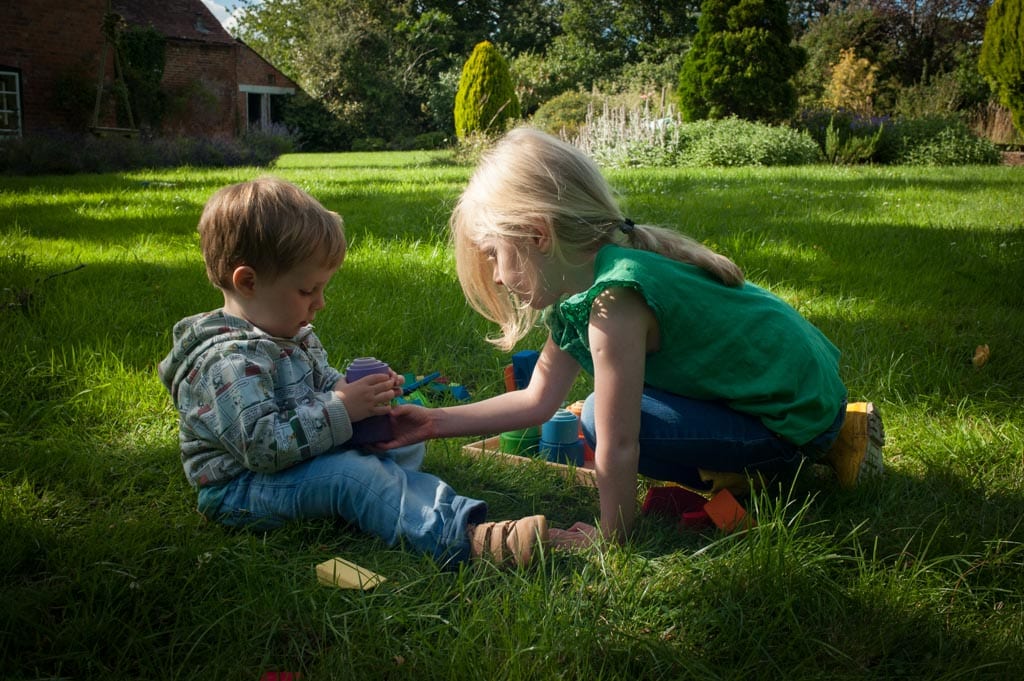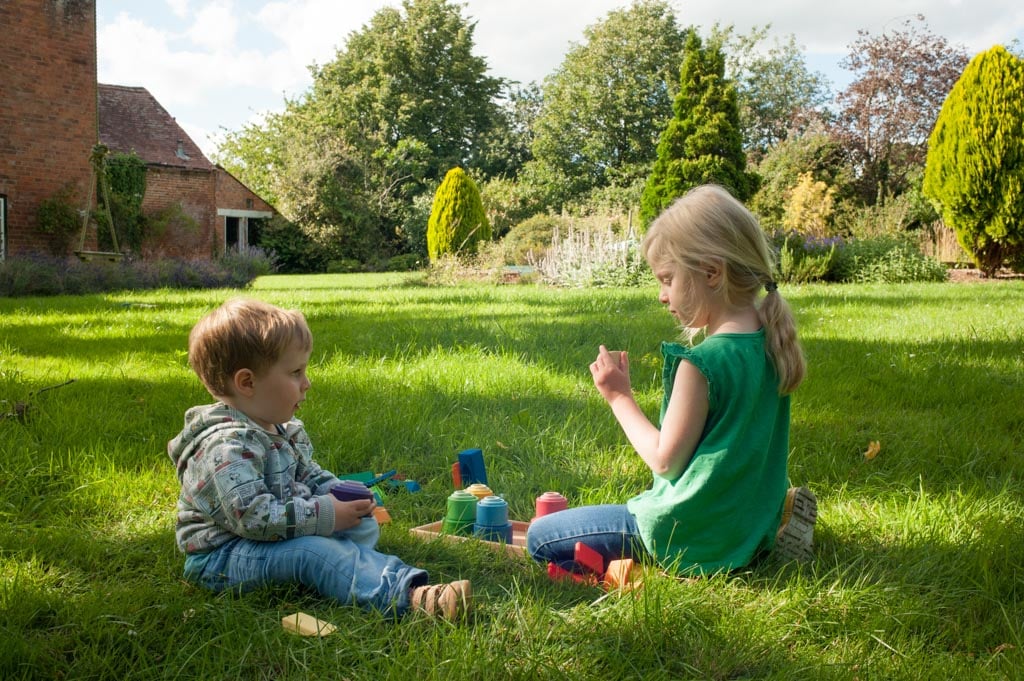Here is a boy.
He is doing his own thing.
His sister is nearby and they are happy to be together. They trade toys, they share materials, they talk, but they don’t co-operate, they aren’t working towards a shared goal.
This is associative play. It is the fifth of the Six Stages of Play.
The six stages of play
Mildred Parten identified six stages of social play, from unoccupied to co-operative. They chart children’s progression from playing alone to playing together. Read the rest of the series here:
What is associative play?
At its heart, associative play is when children play side by side, often with similar toys or activities, and there’s interaction in terms of sharing and conversations, but not a shared goal or structured play.
Recognising associative play
Understanding the nuances that differentiate associative play from other types can help parents and caregivers support this phase.
- Children play in close proximity, often mirroring each other’s activities.
- Interaction occurs through sharing, conversations, or even mimicking, but without a joint storyline or coordinated effort.
The benefits of associative play for preschoolers
Associative play lays the foundations for the final stage of social play – co-operative play. Children learn to play alongside each other and start to share resources and conversation.
Social skills development
My youngest came into the kitchen. Her older sister was already at the table, rolling out playdough.
Me want some!
OK, but only a little bit.
Both children got what they wanted: the toddler expressed her needs and got some playdough and the preschooler communicated her boundaries.
Associative play teaches children to share. They learn the language of sharing and begin to understand that words are the way we communicate our needs.
Verbal communication
The six stages of play are six social stages. Our children are learning to get along with each other. They start off by simply watching then playing in parallel. Eventually they use words and start to interact.
Your child is playing at the water table, trying to pour water into a length of hosepipe with a jug. It’s splashing everywhere and most of it is lost.
Her brother is at the table too. Try using the funnel, he says. Everything goes in.
Cognitive growth
Young children usually learn through experimentation and discovery but observing a friend and imitating her actions can also lead to skill acquisition.

Create the right environment for associative play
Some activities and spaces offer more opportunities for play than others.
- Shared play spaces. Find a corner of your home or garden that’s large enough for your children to play alongside each other. Offer activities that two children can enjoy at once. Sandboxes, water tables and a block areas are good for this. Associative play is impossible if children can’t associate!
- Duplicate toys. There are four children in the 100 Toys house. If I set up a small world scene with a farm, some animals and a single tractor, there is going to be trouble…Make sure you offer enough of everything to prevent snatching and conflicts.
- Supervised interaction. As busy parents, we don’t have the time to play with our children all the time – but it’s a good idea to stay nearby in case tensions start to escalate.
Final word
Associative play, with its blend of individuality and interaction, plays a pivotal role in shaping a preschooler’s social, cognitive, and emotional worlds. Understanding and facilitating this play stage can create rich, developmental experiences for your child, offering her a foundation that intertwines independence with the beauty of shared moments.





